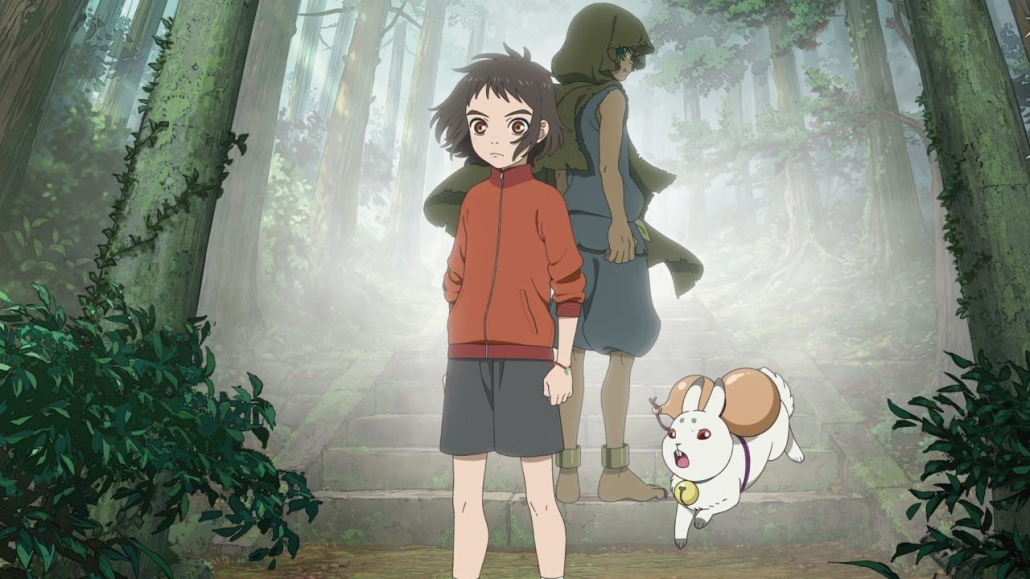‘Child of Kamiari Month’ is magical when it’s not


Directed by Takana Shirai, “Child of Kamiari Month” is a film that loves running but runs in too many directions. Released Tuesday on Netflix, the animated film tells the story of Kanna (Aju Makita), a young girl struggling with the death of her mother. Kanna strives to run for competitions in the absence of her mother, who loved running.
While the film combines fantasy with this story of a mystical journey, it’s the emotional journey Kanna embarks on that is the most effective. Kanna is shown as a flawed character who needs to figure out who she is without her mother. The internal conflict that contextualizes the story is far more important than the external magical conflicts challenging Kanna along the way.
After losing a race in the beginning, Kanna goes to a local shrine to cry and puts on her mother’s amulet. Everything seems to freeze in time and Kanna encounters the shrine’s god — who appears in the form of a bull — and is confronted by Yasha, the descendant of demons. Just then, a rabbit messenger of the gods, Shiro, appears and tells Kanna that she must carry out the task of the Idaten, the god of running, and follow in the footsteps of her mother, who previously served in the role.
Kanna’s task is to run to the sacred city of Izumo and receive chiso, or food, from gods they meet along the way, which she must deliver to Izumo for the annual feast and gathering of the gods. For Kanna, her quest is less about the task than it is about filling an emotional need she has to see her mother in Izumo, who she believes will be there.
From the get-go, there are quite a few lengthy info-dumps about Kanna’s spiritual background, mostly from Shiro, and they’re so obvious as info-dumps that they end up cluttering the story. For viewers who may not be too familiar with Japanese rituals, the abundance of information may dissuade viewers from understanding. Throw in the unnecessary demon frenemy who initially attempts to sabotage the quest and later joins it, the plot becomes much more predictable and far-fetched than it needs to be.
Likewise, the time crunch — Kanna only has a limited amount of time to travel to Izumo — never feels truly intense enough to warrant much attention. Because the time pressure is explained rather than felt, the actual logistics of the journey aren’t quite as engaging as the relationship between Kanna and her mother. Compared to the emotional narrative, the structure of the story is very much formulaic. The conflict resolution seems hastily slapped on in contrast to the development of the relationships between characters.
Thus, the most effective part of the story is how it captures grief. Despite being an excellent runner, Kanna falters during a school marathon after experiencing a flashback to time spent with her mother. As Kanna breaks down crying in the middle of the track, one can’t help but wonder why the film isn’t simply content with such vulnerable moments, however ordinary they might seem in comparison to the mystical.
There are other moments like this too. Kanna’s father buys Kanna running shoes, only for them to be too small — he doesn’t know Kanna as well as it’s implied her mother does. Yet, no matter how alienating Kanna’s life might seem, her father is deeply present. There is no way to villainize this character who’s simply trying to help his daughter overcome her grief in small, everyday ways.
“Child of Kamiari Month” thrives when it centers on everyday life and facing the challenges that come with it. When it’s not distracted by the weight of pushing forward heavy philosophical messages about human nature, it’s lightweight and free. There is so much emphasis on physical magic that one forgets about the quiet parts of humanity. The fantastical elements are beautifully animated and imaginative, but the most powerful imagination is that of Kanna’s, who imagines moments with her mother to relive them.
In the end, the film doesn’t win many competitions for storytelling. The story walks more than it runs and doesn’t pass the baton quite effectively enough. Even then, “Child of Kamiari Month” keeps going. There’s a finish line up ahead, and it races forward.

